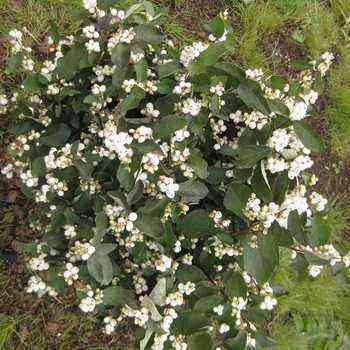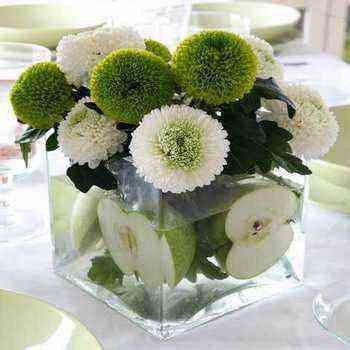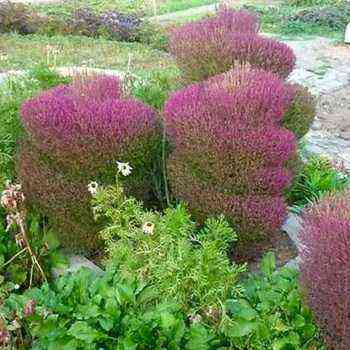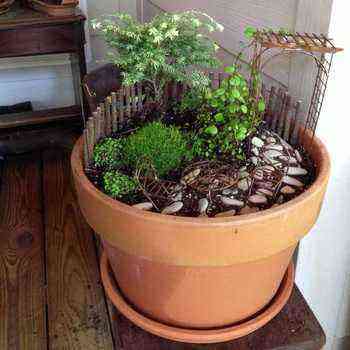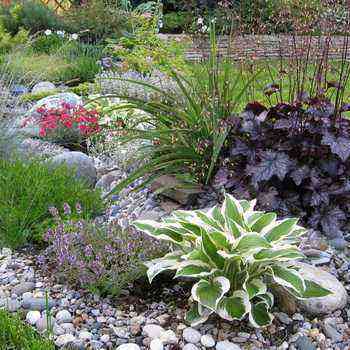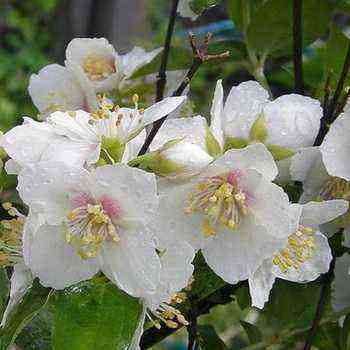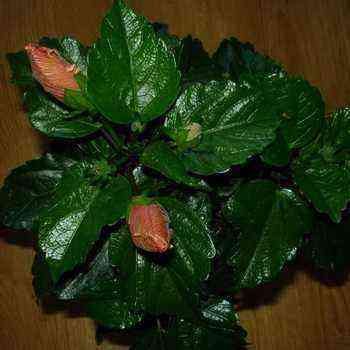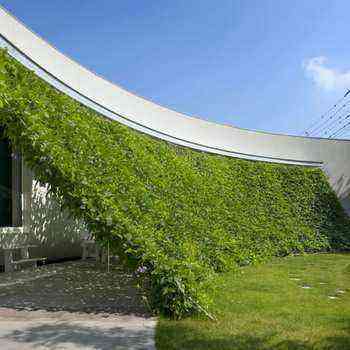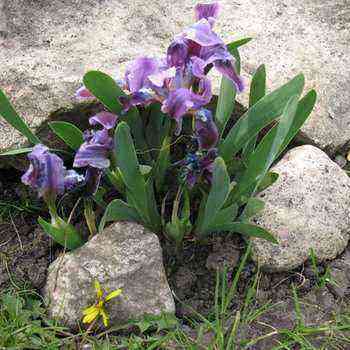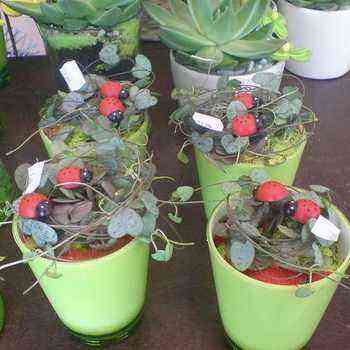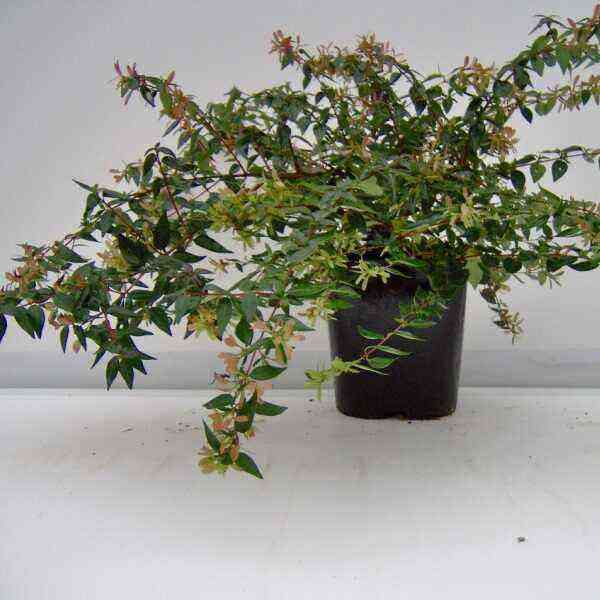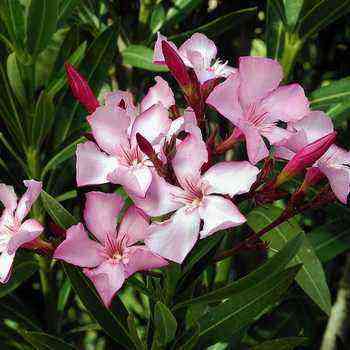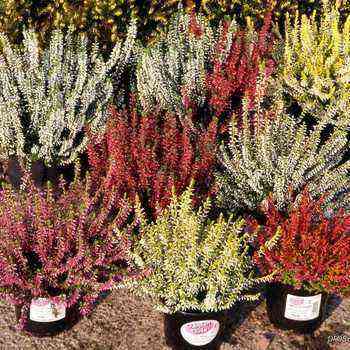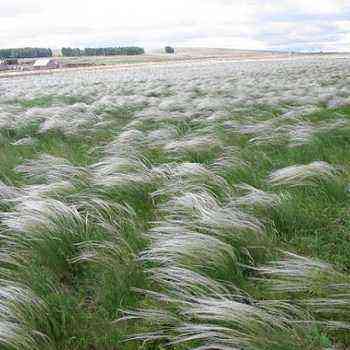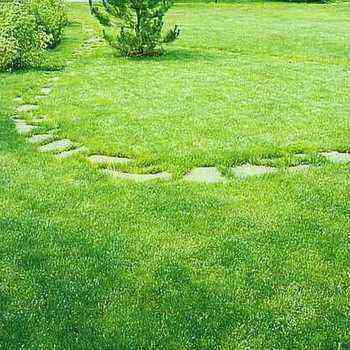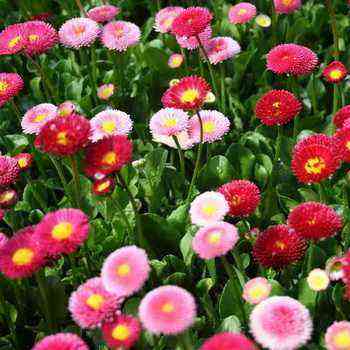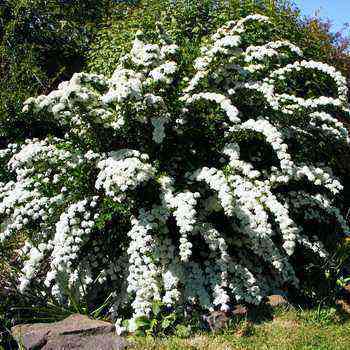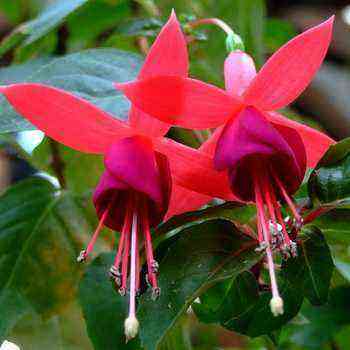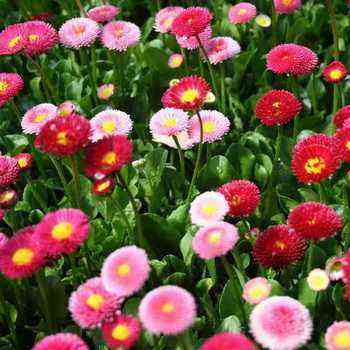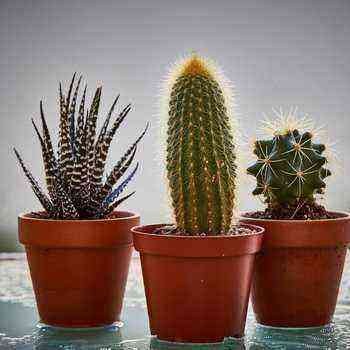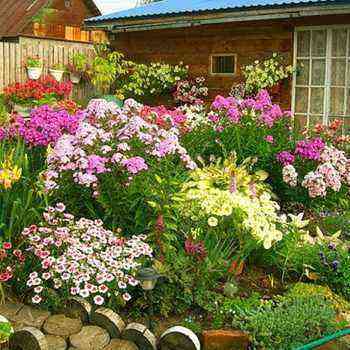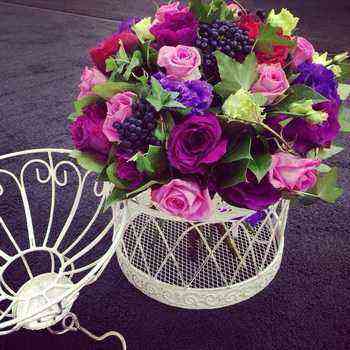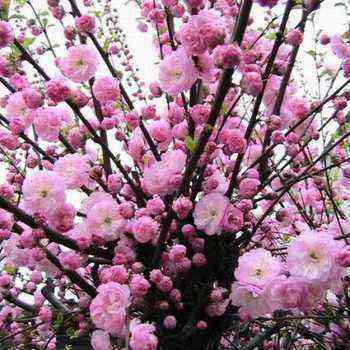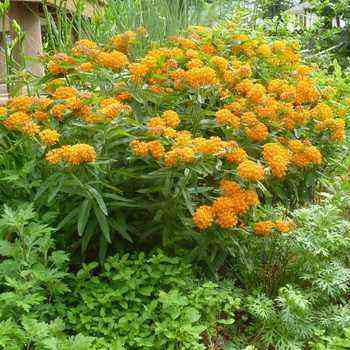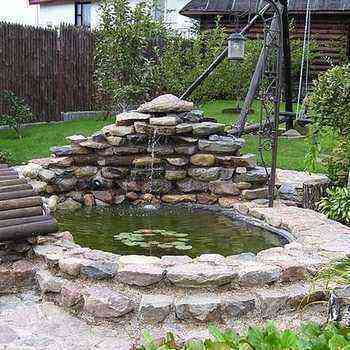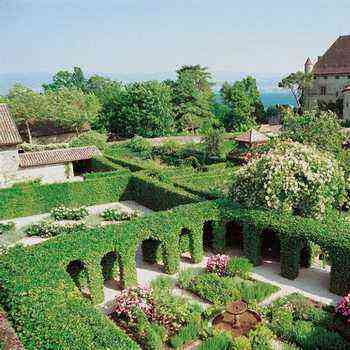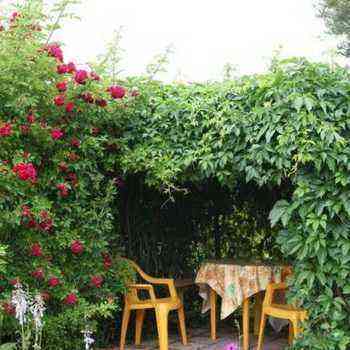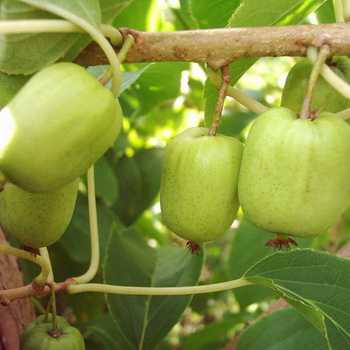 Actinidia berry remains exotic for many gardeners. It is believed that you need to know the secrets of its cultivation in order to get at least some decent harvest. In fact, this is not the case. The proposed description of actinidia will dispel all fears and doubts, since the culture is quite simple in daily care. Numerous varieties allow you to select the right species for any climatic zone. See the description of actinidia and photos, choose, learn new things and experiment on your personal plot.
Actinidia berry remains exotic for many gardeners. It is believed that you need to know the secrets of its cultivation in order to get at least some decent harvest. In fact, this is not the case. The proposed description of actinidia will dispel all fears and doubts, since the culture is quite simple in daily care. Numerous varieties allow you to select the right species for any climatic zone. See the description of actinidia and photos, choose, learn new things and experiment on your personal plot.
Liana plant actinidia kolomikta: leaves and how it blooms, fruits and fruiting (with photo)
Sem. Actinidia
Homeland – the countries of East Asia, Russia (forests of the Far East)
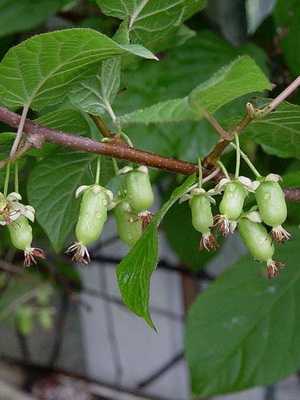
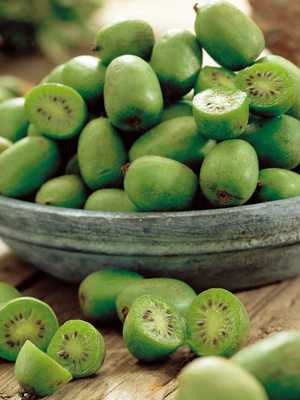
Genus Actinidia (Actinidia Lindl.) belongs to the family Actinidiaceae (Actinidiaceae Van Tieghem), has from 36 to 40 species. The name of the genus was given because of the ovary columns located in the form of an asterisk. Translated from Latin “actis” means “star”. According to another version, the name was given from the Greek word activiziov, which means “ray”.
The liana plant actinidia grows well in mixed cedar-deciduous and fir-deciduous forests, as well as birch and alder forests, in thickets of shrubs and bamboo, along the banks of streams and rivers, along the northern slopes of the mountains, rising to an altitude of 800 m above sea level. The plant of actinidia kolomikta prefers to grow in groups of 5-10 vines. Soils are chosen well-drained, stony, with a sufficient degree of moisture to allow groundwater outflows. On the sand dunes, the plant has the form of a low-growing bush, up to 50 cm high, with short, non-climbing shoots.
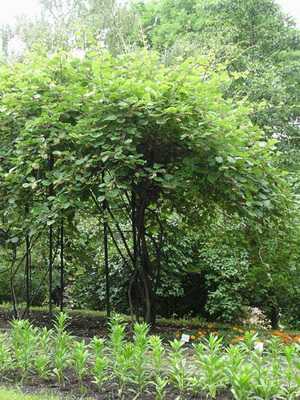
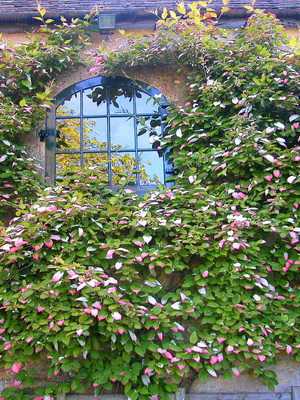
This Far Eastern liana came to us quite recently and our gardeners fell in love with the taste of “kiwi”. But some difficulty in cultivating it baffles many and sometimes forces them to abandon their cultivation. Although, having a certain amount of knowledge about the basics of cultivation, you can successfully cultivate it in our gardens and enjoy the amazing fruits of the actinidia creeper, which will diversify your daily diet.
In nature, the greatest species diversity of actinidia is noted in Southeast Asia and the Himalayas.
In Russia, actinidia grow naturally in the Far East, mainly in sparse forests, distributed up to an altitude of 1300 m above sea level. Actinidia is also common in the south of Primorsky Krai, in the south of Sakhalin Island and in the southern Kuril Islands. For normal growth and development, actinidia need support. In forests, trees serve as such a support, along which they rise to a decent height, grow widely, bloom and bear fruit.
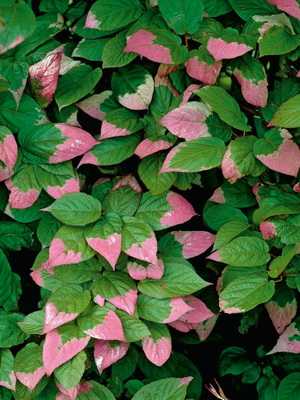

The most common are two types of actinidia: but. kolomikta (A. kolomikta) and but. acute (A. arguta). Also occurs but. chinese (A. chinensis).
Actinidia is a climbing liana, sometimes it climbs trees to a height of 10 m, and in open places it is a small climbing shrub. The trunk and branches are smooth or slightly pubescent, 2-3 cm thick, reddish-brown in color. The roots have a fibrous appearance, they do not go deep into the ground, but in the plane they can spread within a radius of up to 1,5–2 meters. Actinidia leaves are alternate ovoid, red-green in color, 8 – 15 cm long. Shoots are dark brown or red in color. It is interesting how actinidia blooms: the flowers are white or slightly pink, with a pleasant delicate aroma, formed on the shoots of the current year. The plant is dioecious. Female flowers are single, male flowers are 2 – 3 collected in an inflorescence. Blooms in June – July. When actinidia is fruiting, a berry with numerous seeds, round or cylindrical, is formed. Fruit weight 4-12 g, brown or green color. The berries ripen in September. Naturally, the fruits are formed only on female plants. An adult liana at the age of 10 years gives up to 5 kg of berries. The seeds are small, dark brown or yellowish, located in the seed chambers in the center of the berry. Weight of 1000 pieces from 0,8 to 1,0 g (one berry contains more than 100 seeds, 1 kg contains 600 … 700 thousand seeds). The seeds give the fruit a peculiar nutty flavor. Seed germination is maintained throughout the year. The following is an actinidia kolomikta in the photo, illustrating the grace of this vine:
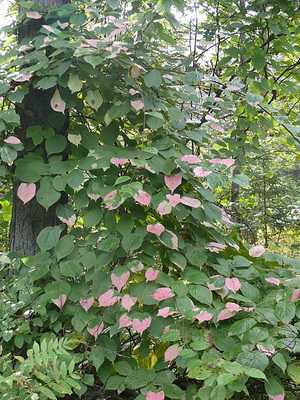
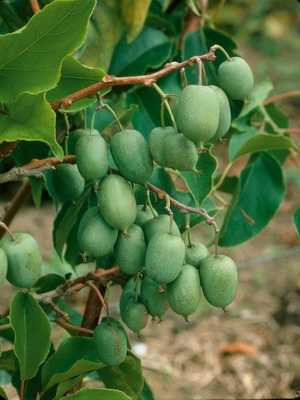
The plant easily tolerates low temperatures. For central Russia, a is especially suitable. sharp. Actinidia arguta and kolomikta are also cultivated in the gardens. The berries of the first are 1,5 times larger and practically do not crumble when ripe, and its bushes are more productive. Fruiting of actinidia kolomikta begins at 3-4 years of plant life, argut – at 5 years. Although she sometimes drops the first flowering. Kolomikta berries hang on the liana for another 5-7 days, and then fall off. Therefore, eating berries should be timely and controversial. When the first talus appears, it is necessary to collect all the berries and sprinkle them on a tray, where it ripens quickly. Argut berries hang on the liana quite firmly and longer. The taste of the berries resembles the taste of kiwi fruit, but even more delicate and mellow.
Types and varieties of actinidia: description and photo
Of all the species diversity, the following species and varieties have become widespread as a berry culture: Actinidium colomicta (A. kolomikta Maxim.); Actinidia argut (A. arguta Planch. ex Mig.); Actinidia Giralda (A. giraldii Diels.); Actinidia polygam (A. poligama Maxim.); Actinidia purple (A. purpurea Rehd.); Actinidia Chinese (A. chinensis), synonym Actinidia gourmet (A. deliciosa) – the well-known kiwi. Let’s look at the description of the actinidia variety in a summary in order to get an initial impression.

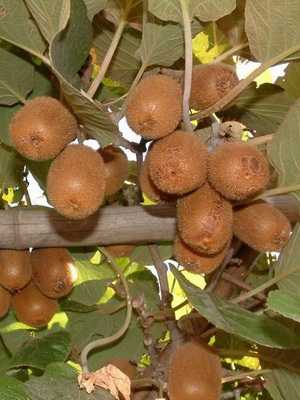
On the territory of Russia, the first four species are successfully grown, and the last two – Actinidia purpurea and Actinidia Chinese can grow in Russia only in the south, in a subtropical climate. The most winter-hardy, and therefore the most common in the conditions of central Russia, was Actinidia kolomikta. A description of the actinidia variety with a photo allows you to carefully study the culture and make the right choice of seedlings or seeds:
Kolomikta is a dioecious plant, that is, there are male and female specimens of this plant. They can be distinguished only when they enter the fruiting phase, at the time of flowering. Female flowers are white bells, not very large, singly located 5-7 cm along the entire length of the vine. The male ones are exactly the same, but they bloom in a group, from 3 to 15 at once in one bunch. Without male vines, female vines will naturally be sterile, and you will not get any harvest from them.

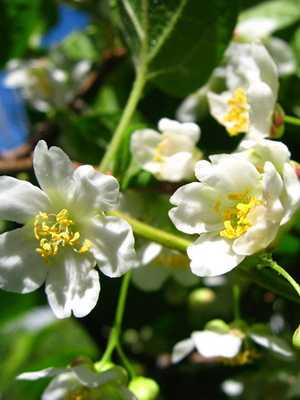
The bloom of actinidia kolomikta can last up to 20 days and is accompanied by a strong aroma. After flowering, the vine sets edible, also very fragrant, delicate-tasting fruits. The fruits of the actinidia kolomikta are cylindrical in shape, up to 1,8 cm in length, dark green, with dark longitudinal stripes.
Kolomikta has a very strange feature: she produces athetian pigment, and this happens at any time of the summer. For example, red-colored peony shoots, tulips just emerging, new rose shoots are red only in spring. Actinidia, on the other hand, has the ability to color its leaves in different colors at any time in the middle of summer. Her tips may turn white, do not be alarmed – this is not a lack of nutrition, not a disease, but simply her peculiarity. In addition, she may have silver stripes in the middle of the leaf – also a feature of this vine. Such a variety of colors makes the liana very elegant, and that is why it is called the variegated liana.
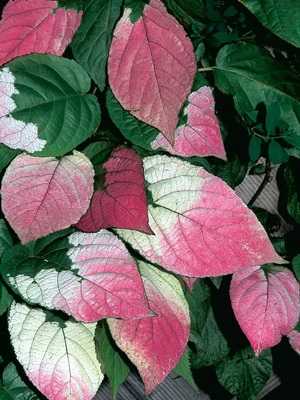

Actinidia kolomikta is very hardy. She came to us from the Far East and can endure -40 degrees. However, there is another danger: in spring, at a temperature of only –4… –5 degrees, all young shoots die, and since they die, the flower buds also die. This means that you will not get the harvest anymore. In the spring, they need to be protected from the spring frost by throwing lutrasil on them. But the vine grows up to 3-5 m in length, and how will you cover such a plant? There is a way out, the only way is to drive in the stake and let the liana go not along the support, and not along the fence, and not along the wall, but around this stake. It will twist counterclockwise and create a funny bush. You will end up with a green fountain.
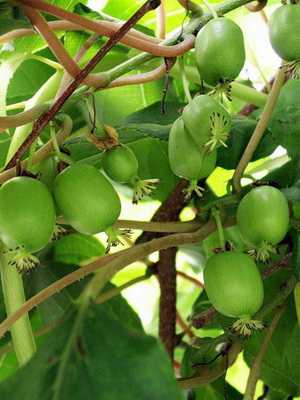
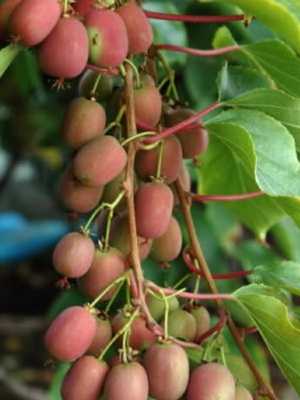
Many varieties of actinidia kolomikta were created by I.V. Michurin: Harvest, Early, Late, Pineapple Michurina. The outstanding Leningrad professor FK Teterev worked a lot on the development of varieties of actinidia for the Leningrad region. He and his followers from the All-Union Institute of Plant Industry (VIR) have created varieties that are quite viable for our climate: Leningradskaya early, Leningradskaya krupnaya, Pobeda, Pavlovskaya, Dostoynaya, Krupnaya. Breeding work continues now.
There are several purely decorative species of actinidia, among them the actinidia Polygama, growing in the Far East, is a rather thermophilic plant.
Actinidia is a taiga plant, several species of which grow in the Ussuri taiga in the Far East of our country. There is a large variety Kishmish of the Ussuriyskaya actinidia, the shoots of which can reach 20-30 m and yield up to 20 kg.
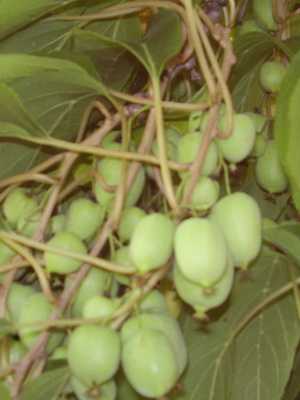
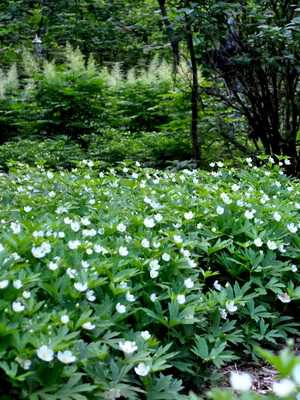
There is also Manchu actinidia, it is called the Ussuri gooseberry. The aroma of its flowers resembles the smell of lily of the valley, the fruits are tastier than that of other actinidia. They are similar to gooseberries with a smooth, thin, translucent skin.
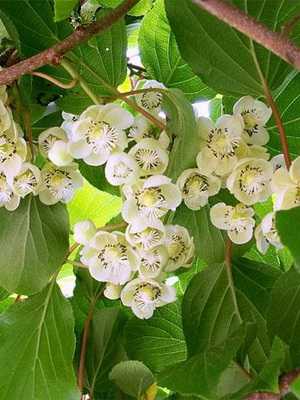
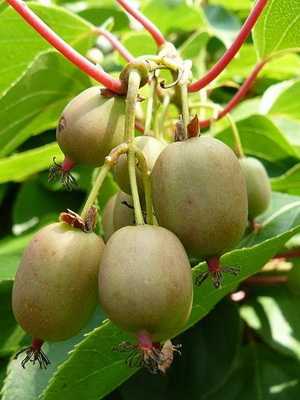
The Far East is growing nasal actinidia, which is called “pepper” for fruits that have a spout like a pepper, a bright orange color and a burning taste. After the autumn frosts, this pungency disappears and the fruits become very tasty.

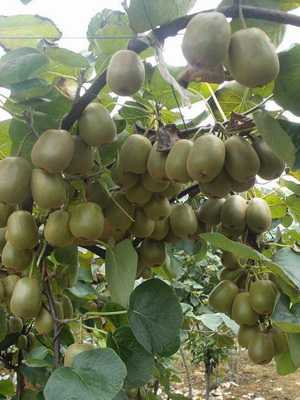
The largest fruits are actinidia kiwi, which was bred in Australia and got its name in honor of the kiwi bird, which lives exclusively in this country and is a symbol of Australia along with the kangaroo. Everyone is familiar with the fruits of this actinidia, covered with a hairy brownish skin. They have a delicate aroma and taste.
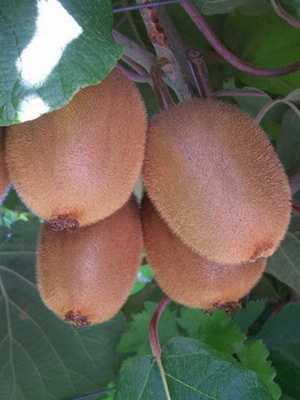

In natural conditions, it grows actinidia argut, in which the fruits are as shaggy as those of kiwi, and have the same taste, but much smaller. Flowering usually occurs in early June, so the ovaries are never damaged by recurrent frosts and the adult liana bears fruit regularly and abundantly.
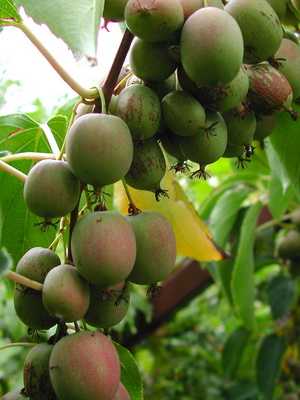
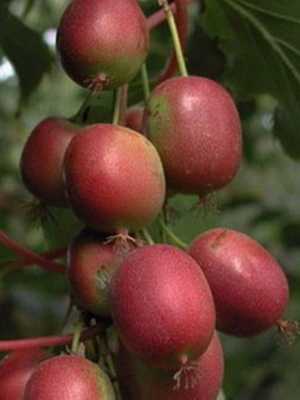
The berries of actinidia arguta are large, one-dimensional, depending on the variety, they are monotonous green, purple or tanned. Their shape can also vary: from ovoid-oblong to pronounced pear-shaped, like in the Figurnaya variety.
Actinidia argut or kolomikt: which is better
Actinidia arguta is inferior to actinidia kolomikta in decorativeness, but significantly surpasses it in terms of marketable output in the form of rather large, weighing 13–18 g, oblong fruits, sweet and with a delicate pineapple smell. If the yield from one liana of actinidia kolomikta averages 3 kg, then for argut this figure is 40-50 kg or more! Each gardener should answer the question of which is better: actinidia argut or kolomikta independently.
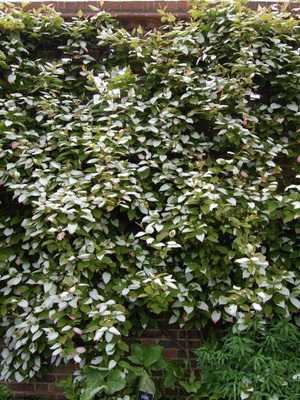
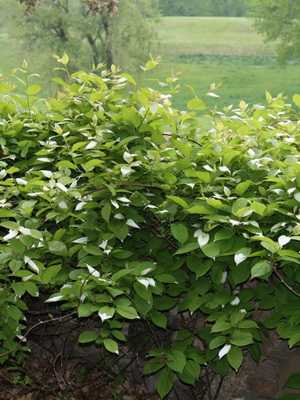
The liana of actinidia arguta lives 70–100 years and is distinguished by its rapid growth, power, durability, and its trunk at the base can reach the size of the trunk of an average fruit tree – 10–20 cm! The leaves of the actinidia arguta are round-ovate, up to 15 cm in length, very dense, bare, dark green on top, in the fall they are painted in yellow and light yellow tones.
Unfortunately, both kiwi and arguta are thermophilic plants and in our country can grow only in the southern regions.
Until now, Russian gardeners are bred in the gardens of Actinidia Michurin varieties: Pineapple Michurina and Klara Zetkin.


Clara Zetkin. The fruits are large, weighing 3,5 g. The shape of the berries is cylindrical or oval, elongated. When ripe, the color is light green with a yellowish tinge. Taste – sweet and sour, with a strong aroma. The variety is relatively large-fruited, resistant to fungal diseases.
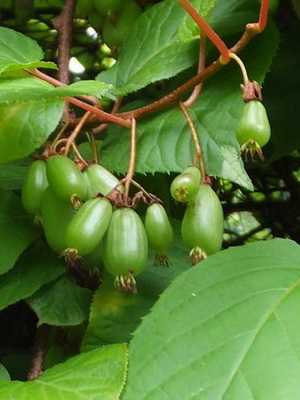

Pineapple Michurina. Fruits are of medium size, weighing 2,3 g. The color when ripe is dark green, the taste is sweet, with a strong pineapple aroma. In the nursery I.V. Michurin’s yield from a fifteen-year-old liana was about 5 kg (Figure 2). Fragrant. The fruits are large, weighing about 2,9 g, cylindrical, yellowish-green in color, with light longitudinal stripes. The surface is slightly ribbed. The taste is sweet and sour.
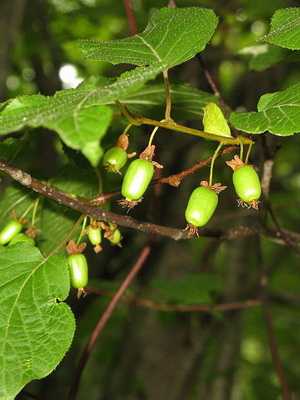
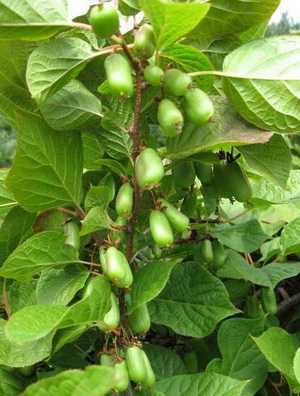
VIR-1. The fruits are large, weighing 3,0 g, cylindrical, with a smooth green surface. Taste – sweet and sour, with a weak aroma (Figure 3).
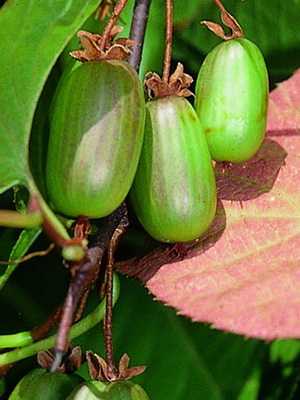
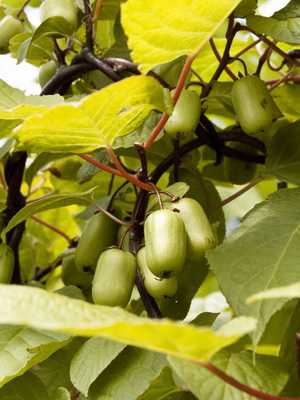
Leningrad large-fruited. The fruits are large, reaching a mass of 4,3 g, cylindrical. Color – dark green with light longitudinal stripes. The surface is smooth. The taste is sweet.
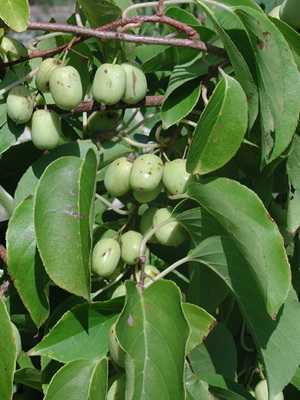
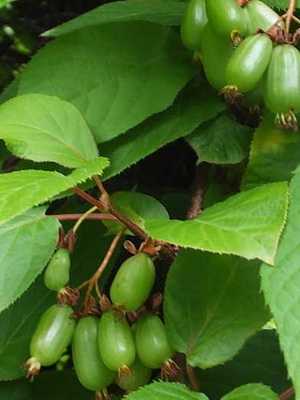
Leningrad late. Medium-sized fruits weighing 2,2 g, ovoid, green, with indistinct light longitudinal stripes. The surface is smooth. The taste is sweet and sweet. Matt. Fruits are medium in size, weighing 2,4 g, elongated, light green. The surface is smooth, matte. The taste is sweet and sour.

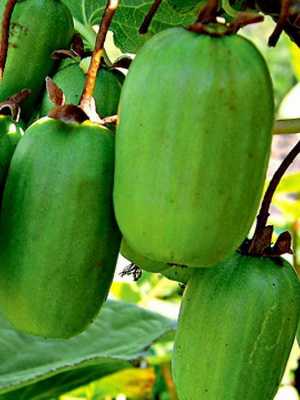
The find. Fruits are of medium size, weighing 2,8 g. Oval-shaped, dark green in color, with longitudinal light stripes. The surface is slightly ribbed. Taste – sweet and sour, with pineapple aroma.

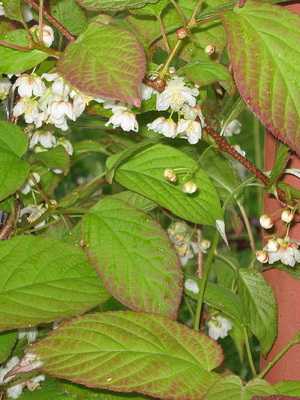
Pavlovskaya. Differs in large oval-shaped fruits, compressed from the sides. The surface is slightly ribbed, green in color, with white longitudinal stripes. The taste is sweet, aromatic.

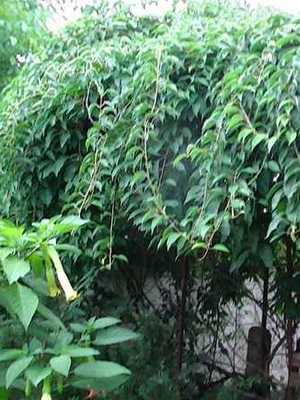
September. Lianas with large fruits, with an average fruit weight of 3,3 g. The shape is elongated-oval, dark green color with light longitudinal stripes. The surface of the berries is smooth. The taste is sweet, aromatic.
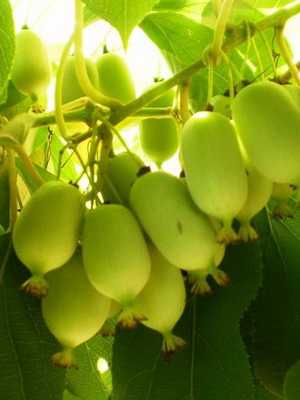
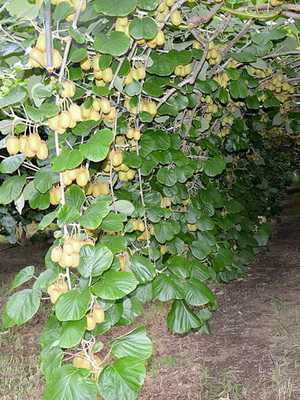
Waffle. Lianas with average fruit ripening (mid-August). The average weight of the berry is 2,9 g, the shape is cylindrical, highly elongated. Color – from olive green to dark olive. The taste is sweet, sour, with a pleasant aroma.
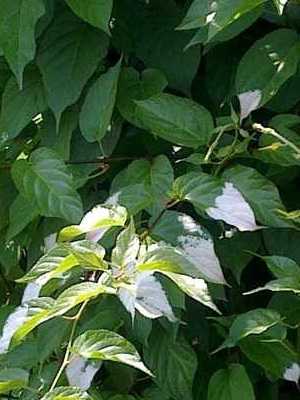
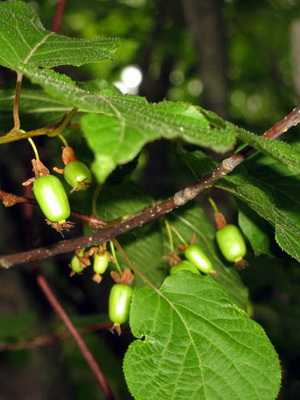
Grape. Early ripening. The average weight of the fruit is 2,1 g, the shape is cylindrical, slightly compressed from the sides. The color is uniform from olive green to dark olive, with indistinct light longitudinal stripes. Taste – sweet and sour, with apple-marmalade aroma.


Abundant. Average ripening period, berry weight – 2,6 g, cylindrical shape. Color – from yellowish green to dirty green. Taste – sour-sweet with pineapple aroma.
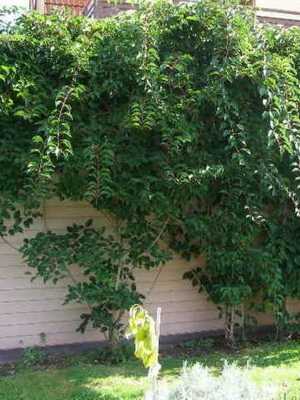

Queen of the garden. Early ripening, with large fruits, weighing 3,4 g. Fruits are cylindrical, strongly elongated. The color is uniform, olive green. The taste is sweet and sour, with a pineapple aroma.
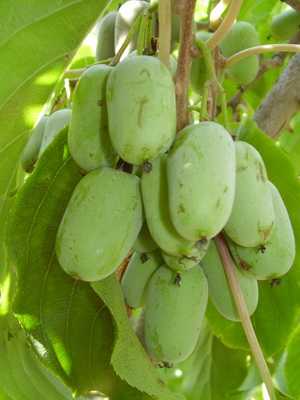

Gourmet. Large-fruited liana of average fruit ripening, weighing 4,4 g. Fruits are cylindrical, uniform olive-green color, with a thin smooth skin. The taste is sweet, with a pineapple aroma.
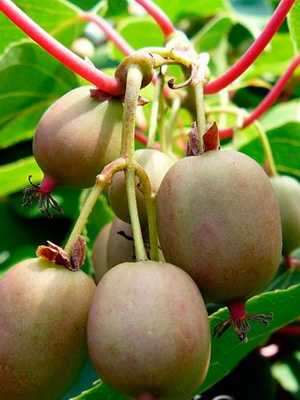
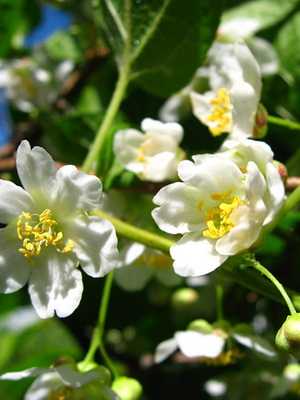
Coin. Medium early ripening, berries with an average weight of 2,2 … 2,7 g, oval, compressed, with light longitudinal stripes. The surface is smooth or finely ribbed. Taste – sweet and sour, with a strong pineapple aroma.
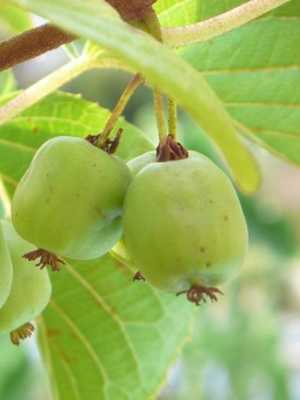
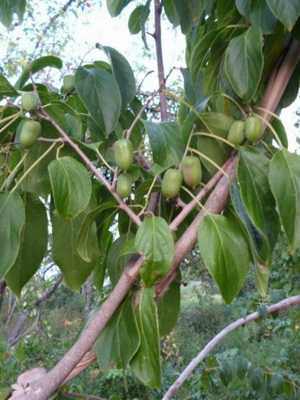
People’s. Medium ripening, with large fruits weighing 3,1 g, cylindrical shape, uniform yellowish-green color. The taste of berries is sweet and sour, with a strawberry aroma.
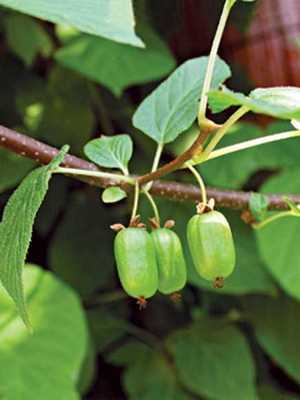
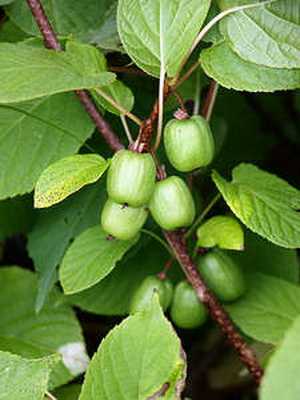
Stranger. Early ripening, with an average fruit weight of 1,9 g, cylindrical shape, olive green to dark olive. The skin is thin, the surface is smooth, ribbed from the base of the berry. The taste of berries is sweet and sour, with a strong pineapple aroma.

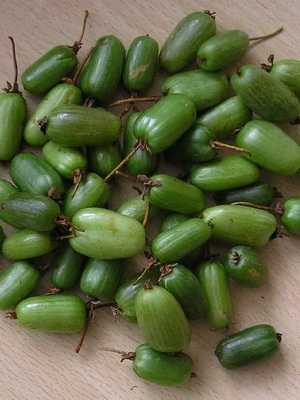
Lovely. Early ripening, with berries weighing 2,6 g, cylindrical, narrowed towards the top. Color – from dark olive to green. Taste – sour-sweet, with an apple aroma.
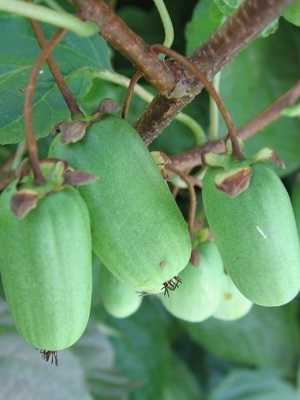
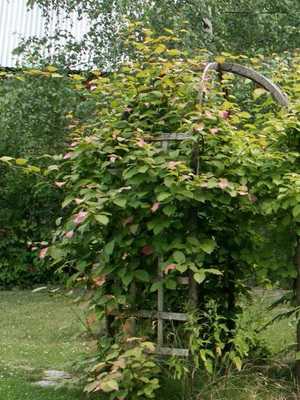
Backyard. Early ripening, with cylindrical elongated fruits weighing 2,8 g. Color from olive green to dark green. Taste – sour-sweet pleasant, with a pineapple-apple aroma.
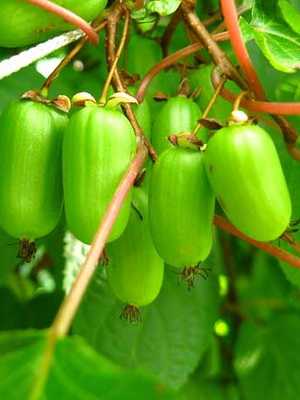
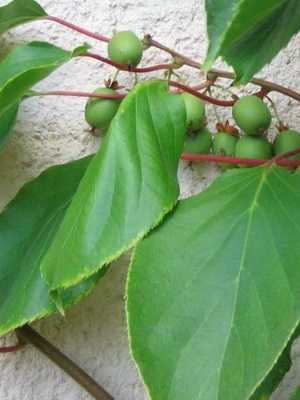
Early dawn. Early ripening. Berries have a mass of 2,6 … 3,5 g, conical, elongated, compressed from the sides. The surface is smooth, shiny, dirty green. Taste – sweet and sour, with a strong pineapple aroma.
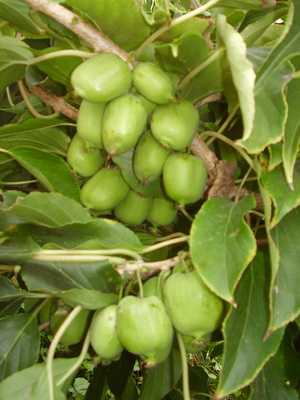
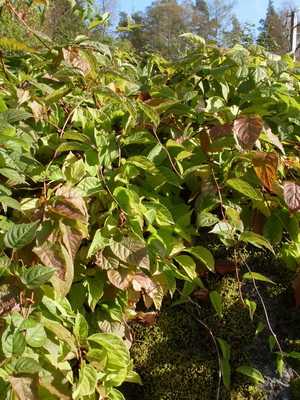
Magpie. Medium ripening. Fruit weight 2,5 g, shape – cylindrical, highly elongated, with a smooth surface, from the base, the berry is finely ribbed. Color from green to olive green. The taste is sweet, with an apple flavor.
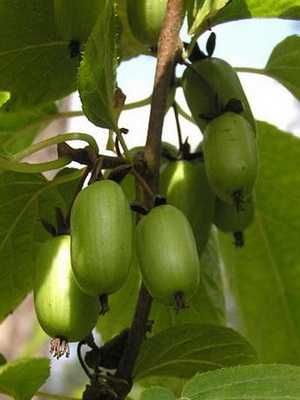
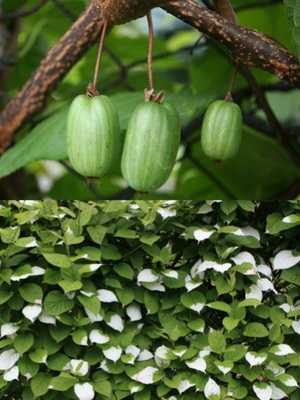
Fantasy gardens. Early ripening. Differs in cylindrical, highly elongated fruits of green color with a dark olive tint, with light longitudinal stripes. The taste of berries is sweet and sour, with a strong pineapple aroma.
All varieties are winter-hardy, resistant to diseases and pests.
Actinidia: how to distinguish a male from a female
Although today there are self-fertile varieties of actinidia, usually, in order to get a harvest, both male and female specimens need to be planted, because this vine is dioecious, just like the well-known sea buckthorn. Up to 10 female plants can be planted on one male plant. In nurseries, male actinidia plants are usually planted along the edges of trellises; in households, you can have one male plant for all those vines that grow in adjacent areas – with the only proviso that tall buildings should not interfere with the transfer of pollen. Experienced gardeners know how to distinguish a male actinidia plant from a female one: for this you need to wait for the flowering period and carefully examine the buds.
The use of actinidia
The fruits of actinidia usually ripen from late August to mid-September. They are not afraid of the first frosts, but the main crop must be removed before frost, which can cause massive loss of fruits; in addition, fruits damaged by frost are not stored. The use of actinidia is limitless: literally everything can be prepared from its fruits: compotes, jam, wine, liqueurs. They make wonderful candied fruits and raisins, but fresh fruits are most beneficial – they are used in desserts, fruit salads and even added to salads from cucumbers and tomatoes, thereby giving this everyday food a touch of Australian exoticism – it was in Australia that actinidia was added to vegetables.


Actinidia is a valuable plant that contains a lot of sugar and pectin substances. There is more vitamin C in actinidia fruits than in lemon fruits. In terms of the content of ascorbic acid, actinidium is second only to rose hips. The actinidia bush can provide ascorbic acid for a family of 3-4 people for a whole year. In addition to vitamin C, fruits contain a lot of sugars, organic acids, tannins and other substances useful to the body.
In folk medicine of the Far East and in other regions, the fruits of actinidia are very widely used as a prophylactic agent for scurvy, for various bleeding, tuberculosis, whooping cough, and dental caries.
Actinidia is useful not only for vitamin C deficiency, but also for exhaustion, in the postoperative period, and for constipation. In fresh fruits, pounded with sugar, vitamins are retained for a year.
The autumn color of the leaves, reddish, can serve as a decoration for any garden. Actinidia is good for vertical gardening of walls, fences, pergolas, gazebos, verandas, single trees.
How to properly trim actinidia for formation
When and how to prune actinidia correctly, given that all vines do not tolerate spring pruning at all (just like stone fruit crops). Their cut does not tighten, and the juice flows all the time through the wound until the entire branch is dry. So all the trimming of vines is done in late summer or early autumn. Only broken or too old branches are cut.
When the vine begins to grow, its stems are immediately tied to supports. In the future, it will itself twist around the supports counterclockwise.
The most important link in the technology of caring for young plantings is the correct formation of actinidia and further pruning.
In the garden, it is best to form actinidia in the form of a trellis. To do this, metal pillars are driven into the soil, onto which 3-4 wires are pulled at a height of 70, 120, 160 and 200 cm. At each level of the trellis, “sleeves” are formed in opposite directions.
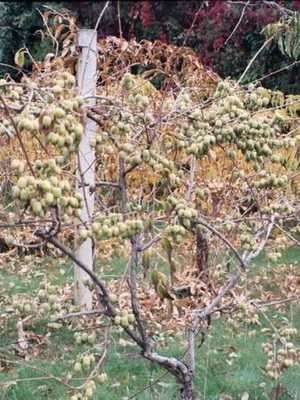
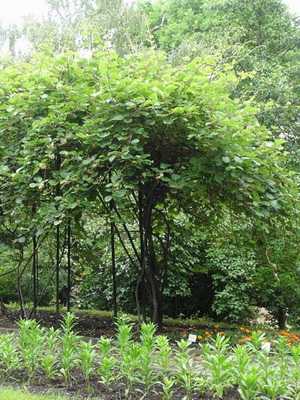
When forming actinidia in a fan-shaped way, the shoots are evenly directed upward in the form of a fan of six shoots. Pruning is done in the fall and is repeated annually. When planting actinidia, it must be remembered that for every two or three female plants, one male must be planted.
The formation of actinidia should begin in the spring of the year following planting. From the left buds, climbing the trellis, two strong shoots develop. They grow until autumn.
In the fall, one weaker outer shoot should be cut into two buds, and the inner one should be left on the support until spring.
In the spring, after the end of sap flow, all weak, damaged and lateral shoots are cut out, except for 2 – 3 main shoots, which are vertically tied to supports. The next year, lateral fruiting shoots are formed on the main shoots.
To increase the winter hardiness of actinidia, the crown should not be allowed to thicken.
Pruning should be carried out in late May – early June. Early pruning should not be carried out, as it causes abundant sap flow and weakens the plant.
Planting and caring for actinidia in the open field: when is it better to plant and in what soil (with video)
The answer to the question of when is the best time to plant actinidia is quite simple – it is better to do it at the end of summer. Planting actinidia and care in the open field are not particularly difficult.

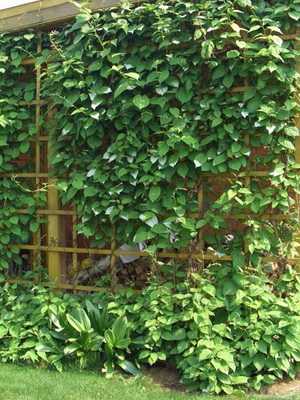
It is best to plant actinidia from the south, south-east or south-west side of buildings, in a place protected from cold winds. It should not be planted so that it rains from the roof, do not plant closer than 75–100 cm from the foundation of the house. You can plant it next to some tree that is not very dear to you. Liana will wrap him around and gradually strangle him, but she will grow well herself. It’s just that this tree should be considered as a support for the vine.
Usually, plants that require supports are planted near the wall of a building, but you should know that a trench for planting them must be made, stepping back from the wall at a distance of at least 75 cm, otherwise the powerful root system of vines will gradually destroy the foundation. As supports, you can use arches, pergolas, lattices, nylon fishing lines or nylon ropes.
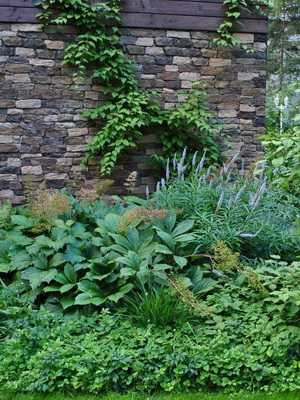

Do not be afraid if the vine snuggles against the wall. This long-standing misconception that under the canopy of its foliage a tree would begin to rot was completely destroyed when the house of the writer Dickens began to be restored in England. It turned out that under the liana, the tree was dry and whole, in contrast to the rotten walls, free of lianas. There is a simple explanation for this: the leaves of the vines are arranged like a tiled roof, one above the other, the water flows down them without hitting the wall. In addition, there are stomata on the lower surface of the leaves, through which the vines suck moisture from the surface of the wall.
When planting for a vine, you should not dig a separate hole. It is necessary to dig a trench along the house, along which the roots will go in the future. It is necessary to plant several plants at once. Firstly, because actinidia is a dioecious plant, and it is best to plant two female specimens and one male plant in between.
Unfortunately, until the vines bloom, it is impossible to distinguish the female from the male, so you should not buy actinidia from random sellers at any exhibition. You only need to buy directly from nurseries or from well-known people.
The trench should be dug 50 cm wide and the same depth. One plant from another can be planted at a distance of 1,2–1,5 m from each other, because the vines grow widely in the future and do not tolerate transplanting well in adulthood. So plant them right and right in place. Remember: vines do not like acidic soils! But they grow well and bear fruit on slightly acidic ones.
At the bottom of the trench, stones, broken silicate (but not red clay) bricks, gravel, pebbles should be laid, then covered with coarse river sand (for foundation work). And only then can the trench be filled with soil. The soil for actinidia must be specially prepared from a mixture of leaf humus and sand in a 1: 1 ratio.
What if there is no leaf humus? Replace it with rotted compost. If there is rotted manure, then it must be half-mixed with the soil that you removed from the trench (of course, if it is not solid clay). The soil must be very well moistened with water, make mounds, spread the roots of the vines on them and carefully cover them with soil removed from the trench. Landings should not be trampled down! So that the soil adheres well to the roots and does not form voids under them, water the plantings a little from a watering can, and the soil will stick to the roots. When trampled down, you compact the earth too much, and the air necessary for the roots does not pass into it well. From above, the soil should be mulched, that is, covered with dry earth or peat to prevent moisture from evaporating from the surface of the earth. But the peat will have to be deacidified, for this sprinkle it with ash or lime.
At an early age, actinidia can be killed by cats digging up and gnawing at the roots. To protect against these uninvited barbarians, iron grates will have to be installed over the plantings. When the trunk of actinidia becomes woody, cats will lose all interest in it and stop touching it. The grates can be removed approximately 2-3 years after planting.
How to grow actinidia: growing and care, frost resistance and how to prepare for winter
Growing and caring for actinidia requires minimal attention from the gardener. In the spring, after the frost has passed, the vines can be fed with organic matter containing nitrogen. Before flowering, it is necessary to give a phosphorus dressing (1 tbsp. A spoonful of double granular superphosphate per 10 liters of water) under each liana and after fruiting, feed it with potassium that does not contain chlorine. To do this, it is enough to close up 1 tbsp into the soil under the vine. a spoonful of potassium or sprinkle the soil with ash (1 cup is enough). Before winter itself, you can pour half a bucket of rotted manure or compost. Actinidia is not removed from the supports for the winter. This winter-hardy plant does not require shelter, but in the spring it is very vulnerable and suffers greatly from spring frosts. Before growing actinidia, you need to find out about the zoning of the selected variety.
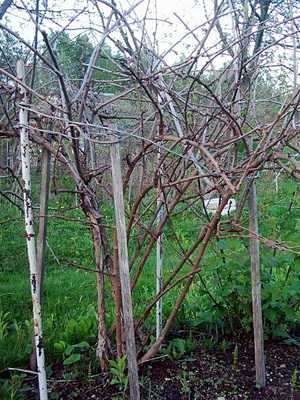
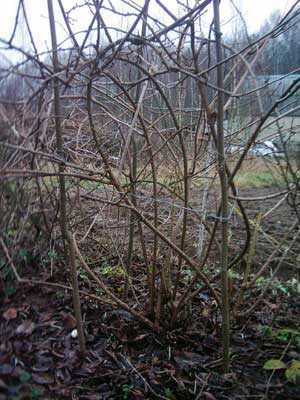
In the spring, immediately after the snow melts, it is necessary to free the vine from the winter shelter, raise and fix its branches on the support threads. Prepare arcs and shelter material in case of recurrent frost. The best material is spunbond non-woven fabric. It is permeable to air and moisture and at the same time protects plants from frost well enough.
Starting from the third year of a plant’s life, it is necessary to apply organic and complex mineral fertilizers to the bush space annually in spring, combining it with watering. The next watering is carried out at the end of flowering and the appearance of berry ovaries. Regular monthly watering is required during dry summers. The last water-charging irrigation in October is a good idea to combine with the application of potash fertilizers to better complete the ripening of the vine. During the growing season in the middle lane, the defeat of actinidia by berry pests was not noticed. However, the defeat of gray rot spores is often noted in late May – early June. Suddenly, somehow at once the outer side of the sheet is covered with a white bloom. In order to prevent further spread of the disease, it is necessary to immediately treat it with Skor or other means against fungal diseases of berry crops. Still, it’s better to be proactive. In mid-May, in order to prevent diseases, it is necessary to treat actinidia with phytosporin three times with a weekly interval. It is important to know how to prepare actinidia for winter: what mandatory measures should be taken. And in the fall, before laying the vines for the winter, treat the bushes with a 3% solution of Bordeaux liquid. And although there is an opinion about the frost resistance of actinidia, nevertheless, in order to avoid the drying out of the vine by winter winds, it is better to lay it on the ground and cover it with spruce branches for the entire winter period. And one more thing: actinidia, especially young seedlings, are very fond of cats. For the period of forcing young plants, it is necessary to arrange some simple barriers around them, for example, from barbed wire.
How to propagate actinidia: propagation by cuttings and growing from seeds
Propagation of actinidia by cuttings is the main way. It is also possible to do this by green cuttings in the summer in a greenhouse, grafting, as well as seeds. Growing actinidia from seeds will require a long period, they usually begin to bear fruit in the 4th to 7th year. After sowing, actinidia seeds sprout rather quickly – after 15-17 days. After the appearance of the second pair of leaves, the seedlings from the boxes dive into the cups or immediately to the garden bed. Seed propagation may not give a reliable result regarding the grade, and the most reliable and at the same time simple way to propagate a plant you like is summer cuttings. It is usually made in late June – early July. Before propagating actinidia, choose the appropriate method and follow agricultural techniques. When grafting actinidia cuttings are cut with 1-3 buds. Only the top sheet is left on them, which is also shortened. The cuttings are placed for 24–32 hours in a container with boiled water, to which a growth stimulator (Kornevin, Heteroauxin) is added. Then the cuttings are planted in glasses filled with substrate. Peat, sand or cocoa soil can be used as a substrate for cuttings. The angle of planting of cuttings is 30–35 °. A bud with a leaf is left on the surface, in no case is it covered with earth. After planting, the substrate around the cuttings is well crushed, watered and the glasses are placed under the film. The optimum temperature for rooting actinidia is 18–24 ° C. In extreme heat, the cuttings are regularly ventilated and transferred to a bright, but not sunny place. Usually it takes 3-4 weeks for actinidia to take root, and green cuttings root better than those that have already partially lignified. Until spring, rooted cuttings remain to grow in glasses, which you can simply dig into the ground, covering in autumn with a dead leaf.
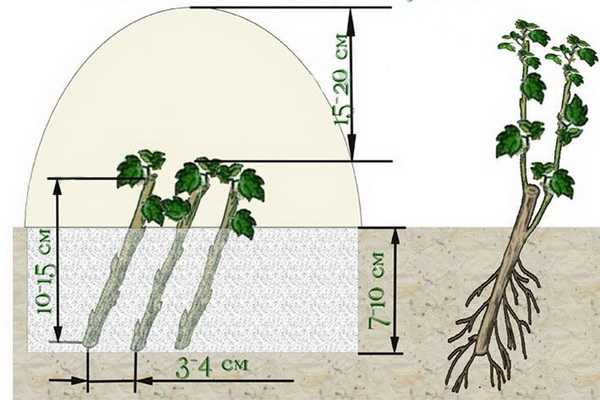
Reproduction of actinidia is also possible with green cuttings up to 10 cm, which are cut from the most productive bushes at the end of June. After removing the leaves from the lower part of the cutting and holding in heteroauxin for a day, they are planted in a greenhouse with the creation of a moist, constantly maintained environment under the shelter. After 3-4 weeks, the young seedling acquires roots. After that, the seedling can be planted in a permanent place. It is advisable to place the seedlings so that their root system is in the shade, and the vine is in the sun.
Many gardeners argue about the advantage of propagation by layering, by digging in the lower branches of the bush, as is practiced on gooseberries. Then, in the fall or early spring, rooted young shoots are dug up, separated from each other and planted in a permanent place in pre-prepared planting holes or buried in a school for growing.
Problems with growing actinidia
Why do actinidia leaves turn white or red?
If the tips of the leaves of actinidia suddenly turn white for no reason, do not worry. It’s just such a feature of actinidia. And if the edges of the leaves turn red, don’t worry either. You have a growing actinidia kolomikta, it changes the color of the leaves. So it’s okay with your vine.
Why does actinidia bloom but not bear fruit?
Because it is a dioecious plant. Obviously, you have either only female plants or only male plants. They differ from each other in that on female plants the flowers are located singly, while in male plants they are collected in a bunch of 5-15 pieces.
Why did the plants disappear after planting actinidia?
Most likely, they were eaten by cats digging up the root. After planting, you need to protect the plants with a metal mesh. After 3-4 years, the nets can be removed. Cats dig only young plants.
